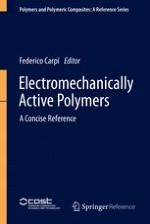2016 | OriginalPaper | Buchkapitel
15. Conducting Polymers as EAPs: Physical Description and Simulation
verfasst von : Meisam Farajollahi, Gursel Alici, Mirza Saquib Sarwar, John D. W. Madden
Erschienen in: Electromechanically Active Polymers
Aktivieren Sie unsere intelligente Suche, um passende Fachinhalte oder Patente zu finden.
Wählen Sie Textabschnitte aus um mit Künstlicher Intelligenz passenden Patente zu finden. powered by
Markieren Sie Textabschnitte, um KI-gestützt weitere passende Inhalte zu finden. powered by
